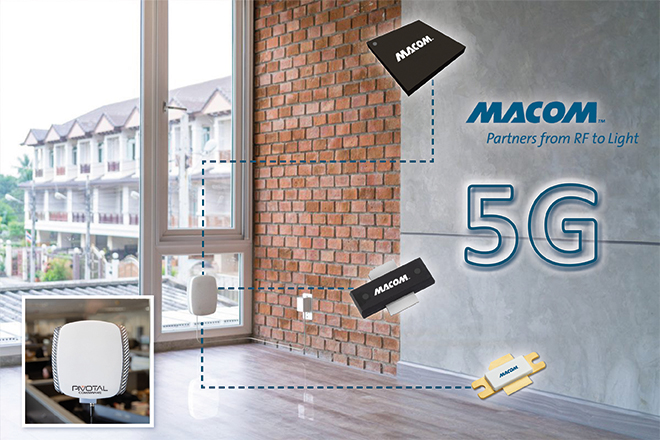Pivotal Selects Macom chips for 5G In-Building Device

Window-mounted subscriber product overcomes biggest obstacle to fixed 5G wireless access at mmWave frequencies
Pivotal Commware, a company that makes Holographic Beam Forming technology, and the compound semiconductor firm Macom, have announced the integration of Macom’s GaAs and AlGaAs mmWave products inside Pivotal’s Echo 5G product line.
The window-mounted, self-installable Echo 5G Subscriber product has been designed to overcome the biggest obstacle to fixed 5G wireless access at millimetre waves - in-building penetration of Gigabit speed broadband to homes and businesses.
Holographic Beam Forming is an antenna technology developed by Pivotal. It allows Echo 5G to penetrate Low-E glass coatings and multiple panes of glass using very little power, which drives its low weight and size profile on the window. Macom’s mmWave technology builds on and extends these capabilities.
According to Brian Deutsch, CEO of Pivotal Commware: “Power handling, efficiency, insertion loss and channel isolation are major challenges for RF components at mmWave frequencies. We believe that Macom’s products and technology overcomes these challenges and will ensure that the Echo 5G product line facilitates not only 5G fixed wireless in-building penetration and subscriber self-installation, but also the cost-effective extension, redirection and shaping of 5G network coverage on demand and with low latency. Carriers will see huge savings on base station deployment CAPEX and on the OPEX that goes with them.”
Deutsch adds, “With the Echo 5G product line wireless carriers achieve the cost economics allowing them to effectively compete against wired broadband service incumbents.”
“Macom offers a unique value proposition to broadband service providers through its multiple mmWave RF components. We believe that Pivotal’s Echo 5G Subscriber and Network products will be game-changers for the wireless carriers who deploy them,” said Macom’s President and CEO, John Croteau. “Macom’s broad portfolio of amplification, signal generation and control components across the microwave and mmWave spectrum coupled with our unmatched heterolithic integration capabilities offer the industry’s lowest insertion loss and best noise figure, providing superior reception for macrocell basestations and fixed wireless access points.”


































